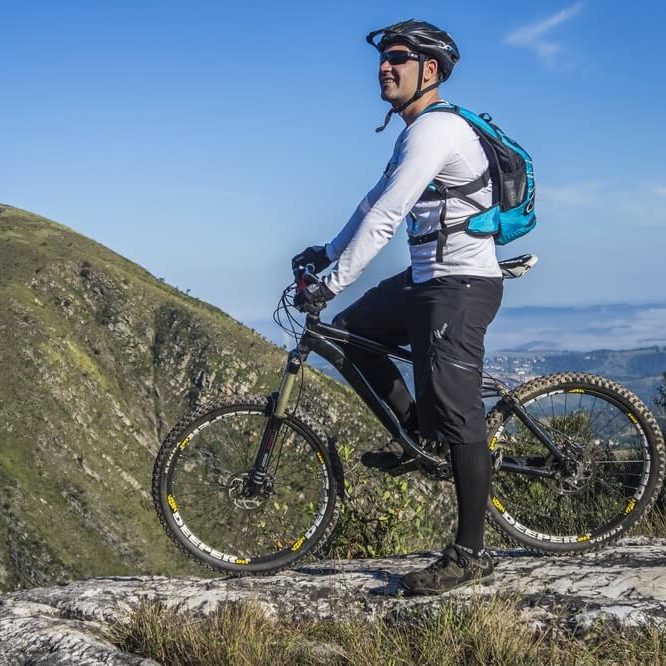Introduction: The Joy of Cycling and Its Benefits
Cycling is one of the most popular forms of exercise across the globe. Not only is it an enjoyable way to explore your surroundings, but it also offers numerous health benefits. While many people think of cycling as merely a cardio workout, it primarily targets specific muscle groups. Understanding which muscles are involved can enhance your cycling experience, improve performance, and aid in injury prevention.What muscles does cycling work? This article will delve into the primary muscles engaged during cycling and explore additional benefits of this versatile exercise.
Major Muscles Used in Cycling
Quadriceps: The Powerhouse of Your Legs
The quadriceps, located on the front of the thigh, are crucial for cycling. This group of four muscles is responsible for extending the knee and providing power during pedaling. Every time you push down on the pedals, your quadriceps are highly activated, making them essential for efficient cycling.
As you shift gears or tackle hills, you engage your quads even more. Strengthening these muscles through cycling can improve not only your cycling performance but also your overall leg strength for various activities.
Hamstrings: Complementing the Quads
While the quadriceps are vital for pushing down on the pedals, the hamstrings play an important role in the upward motion. Located at the back of the thigh, hamstrings work to flex the knee as you pull up on the pedals.
This pulling motion often gets less attention, but it is essential for a balanced cycling technique. Strengthening the hamstrings can prevent injury by supporting knee stability and providing harmonic movement in your legs.

The Role of the Calves
Gastrocnemius and Soleus Muscles
The calves, made up of the gastrocnemius and soleus muscles, are also significantly involved in cycling. These muscles contribute to the ankle movement necessary for effective pedaling. As you cycle, both muscles are engaged during the downstroke, pushing down the pedal.
A strong calf can improve your cycling endurance and power efficiency. Many cyclists often neglect calf training, but incorporating specific exercises can enhance your performance on the bike.
Improving Efficiency and Reducing Fatigue
Well-conditioned calves can help improve cycling efficiency. As fatigue sets in during longer rides, your tired calves may struggle to maintain the required force. Strengthening these muscles, therefore, can play a critical role in sustaining energy levels and performance during extended rides.
Engaging the Glutes
Gluteal Muscles: The Key to Power
The gluteal muscles, or glutes, are essential for generating power when cycling. Comprising three muscles—gluteus maximus, gluteus medius, and gluteus minimus—these muscles work together to stabilize your hips and support leg movements.
During each pedal stroke, especially when climbing hills or accelerating, your glutes are activated significantly. A strong set of glutes contributes to overall cycling power and reduces the risk of injury.
Situational Strength
In addition to aiding cycling performance, strong glutes play a critical role in various sports and activities. Through engaged biking, you can effectively increase glute strength, which translates to improved athletic performance beyond cycling, such as running or weightlifting.

Core Muscles: Stabilization and Posture
Abdominals and Obliques
While cycling is often seen as a leg workout, the core plays an essential role in maintaining stability and posture. The abdominal muscles and obliques work to stabilize your body while you pedal.
A strong core allows for better bike control and improved pedaling efficiency. When your core is engaged, it helps transfer energy more effectively from the upper body to the lower body, contributing to a smoother ride.
Lower Back Muscles
The erector spinae, a group of muscles along your spine, also contribute to back stability as you cycle. A strong core and lower back prevent fatigue and discomfort during long rides. Thus, developing these muscles can enhance not only your cycling experience but also overall posture and ease of movement in daily activities.
The Upper Body: Arms and Shoulders
Biceps and Triceps
While cycling primarily targets the lower body, the arms, and shoulders are also involved. The biceps and triceps perform small but essential movements while gripping the handlebars.
As you change positions or navigate turns, these muscles help maintain control of the bike. Although the focus is on lower body strength, developing your arms and shoulders contributes to a well-rounded fitness program.
Enhancing Overall Strength
Strengthening your upper body can facilitate improved cycling posture, thereby enhancing performance. Exercises that focus on the arms, shoulders, and upper back can lead to better bike handling and increased comfort on longer rides. This well-rounded approach will create a more capable and balanced cyclist.

Additional Benefits of Cycling
Cardiovascular Health
In addition to building muscle, cycling is an excellent cardiovascular workout. The repetitive nature of pedaling increases heart rate and improves circulation.
Regular cycling helps strengthen the heart and lungs, reducing the risk of cardiovascular diseases. Cycling is not only about building muscle but also about supporting your overall health through consistent aerobic exercise.
Mental Health Benefits
Cycling also offers significant mental health benefits. Engaging in outdoor biking can enhance mood and reduce stress levels. Physical activity releases endorphins, creating a sense of happiness and well-being.
Additionally, cycling allows for fresh air and exploration of nature. Whether it’s a scenic ride through the countryside or a leisurely spin around the neighborhood, cycling presents an opportunity to disconnect and recharge mentally.
Cycling for All Fitness Levels
Adaptability and Accessibility
One of the greatest advantages of cycling is its adaptability for all fitness levels. Whether you’re a beginner or an advanced cyclist, you can tailor your rides to suit your capabilities. This makes cycling an inclusive activity that can be enjoyed by people of all ages.
Beginner riders can start with short, flat rides, gradually increasing distance and intensity as they build endurance. Advanced cyclists can tackle mountain trails, long-distance rides, or structured training regimens. Moreover, cycling can be low-impact, making it a safer alternative for individuals with joint pain or those recovering from injuries. This accessibility broadens cycling’s appeal, allowing more individuals to engage in physical activity regularly.
Social Engagement
Cycling also fosters a sense of community and social engagement. Joining local cycling clubs or participating in group rides not only makes exercising more enjoyable but can also offer motivation and camaraderie. Many people find that cycling with others enhances their experience, offering opportunities to share tips, explore new routes, and build friendships.
Group rides often feature a mix of fitness levels, allowing everyone to participate at their own pace. This communal aspect makes cycling a social sport where teamwork encourages accountability. Whether you’re training for a race or simply enjoying the scenery, the social connections formed through cycling can make it a fulfilling and rewarding experience. So, grab a friend, explore the trails, and enjoy both the physical and social benefits of cycling together!
Taking Cycling to the Next Level
Setting Goals and Tracking Progress
As you become more comfortable with cycling and its benefits, consider setting specific goals to enhance your performance. Whether you aspire to ride a certain distance, conquer a challenging route, or improve your speed, creating goals gives your cycling routine a clear focus.
Tracking your progress can be motivational. Many cyclists use apps or wearable devices to monitor distance, speed, and elevation gained while riding. These tools allow you to celebrate small victories and stay engaged in your training. Additionally, regular goal-setting can lead to substantial improvements over time, rewarding you for your hard work and dedication.
Exploring Different Cycling Disciplines
To keep your cycling experience fresh and exciting, explore different cycling disciplines. Road biking, mountain biking, and cyclocross each offer unique challenges and environments.
Road biking focuses on speed and endurance on paved surfaces, ideal for those who enjoy long-distance rides. Mountain biking takes you off-road, presenting varied terrain, which tests your handling skills and balance. Cyclocross combines elements of both, featuring a mix of on-road and off-road riding with obstacles to navigate. Experimenting with different types of cycling can help discover what you enjoy the most.
By diversifying your cycling experiences, you not only keep your workouts engaging but also develop a broader range of skills. This holistic approach to cycling can lead to a richer and more rewarding fitness journey.
Conclusion: Embrace the Full Benefits of Cycling
In conclusion, cycling is a multifaceted activity that engages various muscle groups while offering numerous health benefits. From the powerful quadriceps and hamstrings to the stabilizing core and upper body muscles, every part of your body plays a role in this enjoyable form of exercise.
Beyond muscle engagement, cycling promotes cardiovascular health and enhances mental well-being. By understanding how cycling works your muscles, you can tailor your workouts for optimal performance and enjoyment.
Whether you ride for fitness, leisure, or competition, embracing the full benefits of cycling can lead to a healthier and more enjoyable lifestyle. So hop on your bike and start pedaling for a stronger body and mind!
